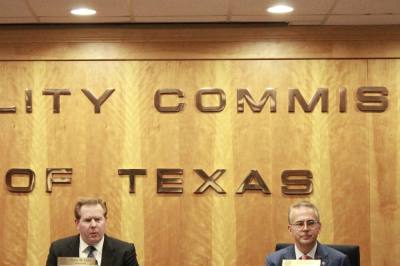In its new Seasonal Assessment of Resource Adequacy report, Texas’ power grid operator anticipated peak demand could reach 82,739 megawatts on the hottest days. Last summer, the grid broke multiple records and reached peak demand of just over 80,000 megawatts July 20.
Texans were asked to voluntarily conserve energy twice in July, but ERCOT did not issue any emergency alerts. At a May 3 news conference, officials said they would communicate with Texans in advance if voluntary conservation is recommended at any point this summer or the grid reaches emergency conditions.
Thanks to over two years of reforms following Winter Storm Uri, ERCOT CEO Pablo Vegas said the power grid is “more reliable than ever.”
But as Texas’ population continues to grow, demand for electricity will begin to outpace the amount of available dispatchable power, which comes from sources such as natural gas and coal. This means Texas will need to rely on renewable energy sources, such as wind and solar, to keep the lights on.
Vegas likened the grid to a car: “It’s ready to run; it’s going to be reliable. However, we’re asking it to go further [than past summers] without adding more reliable fuel.”
Unlike dispatchable sources, energy regulators cannot always count on the sun and wind to be there. Vegas said the highest-risk periods for the grid will be after 9 p.m., when it remains hot outside, but the sun has set and winds begin to die down.
“We will continue to use every tool available to keep the lights on and the AC running this summer,” said Peter Lake, the chair of the Public Utility Commission of Texas. “But we do not have any control over the wind or sun.”
As a result, Texans could be asked to conserve energy or even face brownouts this summer. Brownouts typically occur when utility companies temporarily reduce the flow of electricity to certain areas to prevent a large-scale blackout. During a brownout, lights may dim or flicker, but homes will still receive power.
According to the SARA report, emergency conditions are possible when three things happen at the same time: extreme heat; low renewable energy output; and widespread, unplanned outages at dispatchable power plants. Vegas said there is a less than 1% chance of this happening.
The Texas Legislature is considering dozens of bills related to the power grid. Among them is a nine-bill plan from the Senate, which is carried by Sens. Charles Schwertner, R-Georgetown, and Phil King, R-Weatherford.
Vegas said the Legislature’s top goals include improving grid reliability, increasing the amount of available dispatchable power and keeping costs “reasonable” for Texans.
“We share those goals,” Vegas said. “And we think that we're going to remain aligned and come aligned as we finish this legislative session.”






